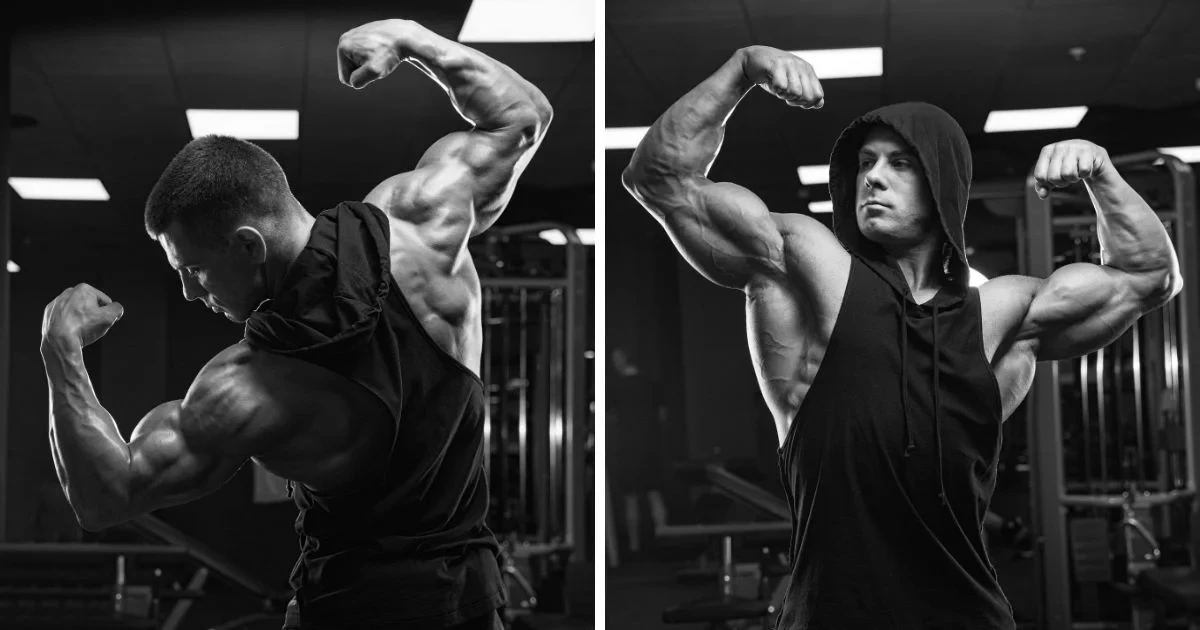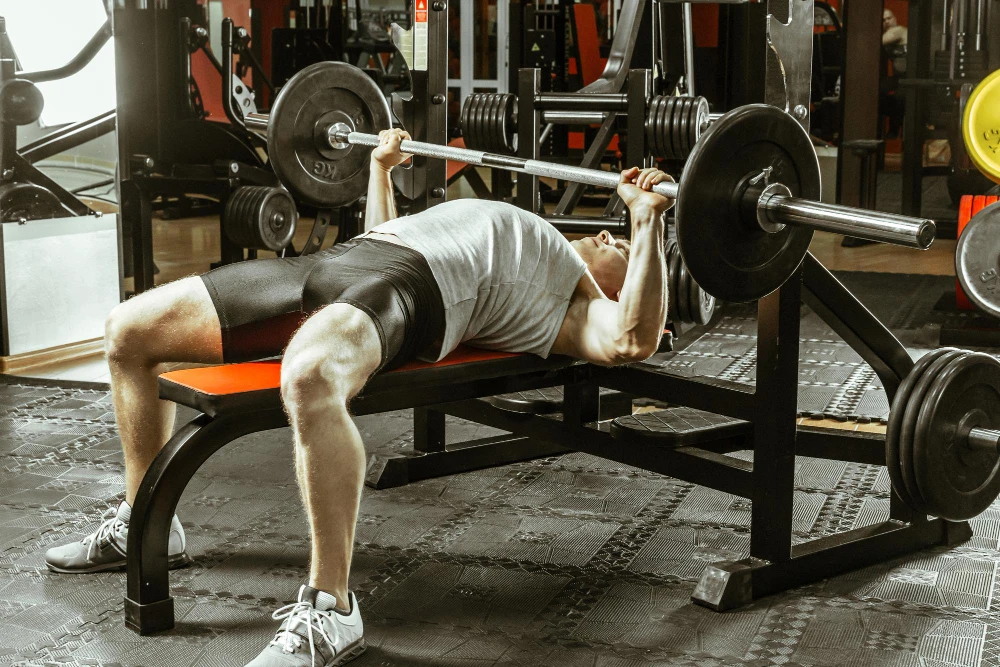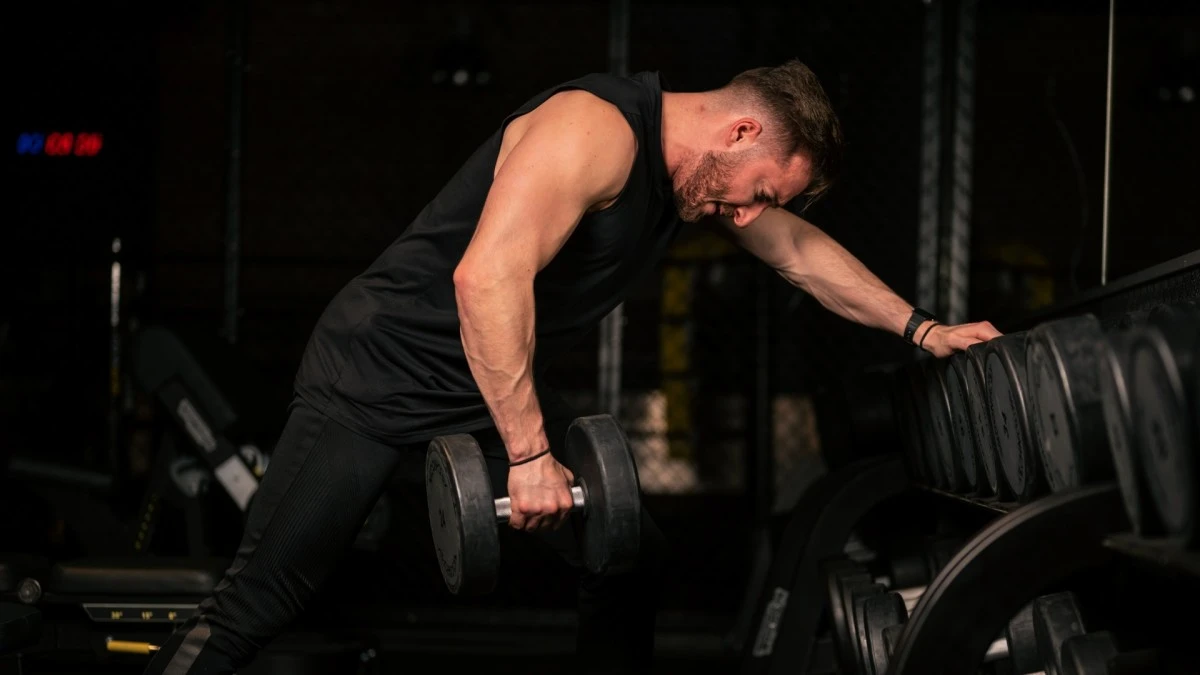Understanding the Dynamics of Back and Chest Day Workout
When it comes to a back and chest day workout, it’s essential to understand the dynamics involved. These workouts target different muscle groups, including the width of your back muscles and the strength of your chest. To maximize the benefits, proper form and technique are crucial. By balancing push and pull exercises, you can achieve a well-rounded upper body workout. Incorporating compound exercises, such as overhand grip pull-ups and bench press, allows for maximum muscle activation. Essential Exercises for Back and Chest Day Back and chest workouts are essential for building a strong upper body. Here are some essential exercises for each muscle group on their respective workout days:
Back Day:
- Deadlifts: Deadlifts are a compound exercise that works your entire back, including the lower, middle, and upper portions, as well as your glutes and hamstrings.
- Pull-Ups/Chin-Ups: These exercises target your lats, biceps, and upper back. Pull-ups involve an overhand grip, while chin-ups involve an underhand grip.
- Barbell Rows: Barbell rows are great for building thickness in your upper back and targeting your lats and rhomboids.
- Lat Pulldowns: This exercise helps isolate the lats and is an excellent option if you can’t do pull-ups yet or want to vary your routine.
- Seated Cable Rows: Seated cable rows work your middle back and provide a good contraction at the end of each repetition.
- Face Pulls: This exercise helps improve posture and works the rear deltoids and upper traps, which are important for overall back health.
Chest Day:
- Bench Press: The bench press is a classic chest exercise that targets the pectoral muscles. You can do flat, incline, or decline bench presses to work different areas of your chest.
- Dumbbell Flyes: Dumbbell flyes isolate the chest and provide a great stretch and contraction of the pectoral muscles.
- Push-Ups: Push-ups are a versatile bodyweight exercise that targets the chest, shoulders, and triceps. You can vary hand placement for different effects.
- Chest Dips: This exercise targets the lower chest and can be done using parallel bars or a dip machine.
- Incline Dumbbell Press: Incline presses work the upper portion of the chest and help create a well-rounded chest development.
- Cable Crossovers: This isolation exercise targets the inner part of the chest and can help create definition and separation between the pectoral muscles.
Remember to warm up before your workouts and use proper form to avoid injury. Also, consider incorporating both compound and isolation exercises to ensure you’re targeting all parts of your back and chest for balanced development. It’s essential to vary your workouts over time to keep making progress and prevent plateaus. Additionally, consult with a fitness professional or trainer to create a workout plan tailored to your specific goals and fitness level.

Beginner’s Guide to Back and Chest Day Workout
A beginner’s back and chest workout is a great way to start building strength, improving posture, and enhancing your overall upper body fitness. This guide will provide you with a simple and effective workout routine that targets your back and chest muscles. Before starting any exercise program, it’s essential to warm up and consult with a healthcare professional if you have any underlying health concerns or injuries.
Warm-up (5-10 minutes): Begin your workout with a brief warm-up to increase blood flow and prepare your muscles for exercise. You can do light cardio, such as jogging in place, jumping jacks, or brisk walking, followed by dynamic stretches for your upper body.
Chest Workout:
Push-Ups:
- Sets: 3
- Repetitions: 10-15
- Push-ups are a classic chest exercise that also engages your shoulders and triceps. Keep your body in a straight line, and lower yourself until your chest nearly touches the ground.
Dumbbell Bench Press:
- Sets: 3
- Repetitions: 10-12
- Lie on a bench (or the floor) with a dumbbell in each hand. Press the dumbbells upward while keeping your elbows at a 90-degree angle. Lower them back down to chest level.
Dumbbell Flyes:
- Sets: 3
- Repetitions: 10-12
- Lie on a bench with dumbbells in hand, palms facing each other. Open your arms wide, feeling a stretch in your chest, and then bring them back together.
Back Workout:
Bodyweight Rows (or Inverted Rows):
- Sets: 3
- Repetitions: 10-15
- Use a bar, TRX straps, or a Smith machine at a low setting. Hang beneath the bar and pull your chest towards it, squeezing your shoulder blades together.
Lat Pulldowns (or Pull-Ups if possible):
- Sets: 3
- Repetitions: 8-10 (or as many as you can do)
- If you have access to a lat pulldown machine, use it. Otherwise, try assisted pull-ups or pull-up variations. Focus on pulling your chest to the bar.
Dumbbell Rows:
- Sets: 3
- Repetitions: 10-12 per arm
- Place one knee and hand on a bench while holding a dumbbell in your free hand. Pull the dumbbell toward your hip, keeping your back straight.
Cool-down (5-10 minutes): Finish your workout with a cooldown to help reduce muscle soreness and promote flexibility. Stretch your chest and back muscles by holding gentle static stretches for 20-30 seconds each.

Can the Order of Exercises Impact Your Workout?
The order in which you perform your back and chest exercises can have a significant impact on the effectiveness of your workout. Start with compound movements that engage multiple muscle groups before moving on to isolation exercises. Alternating between back and chest exercises allows for proper rest and recovery. Experiment to find the best exercise order for your specific needs and goals.
Is there an Ideal Sequence for Back and Chest Exercises?
When it comes to back and chest exercises, there is no one-size-fits-all ideal sequence. It depends on individual goals and preferences. Some prefer starting with larger muscle groups like the back, while others prioritize chest exercises. The key is to find a sequence that allows you to maintain intensity and achieve your desired results.
How to Overcome Common Workout Challenges?
Overcoming common workout challenges requires dedication and strategy. To combat lack of motivation, set realistic goals and find an accountability partner. Plateaus can be overcome by changing up your routine, increasing weight or reps, or trying new exercises. Time constraints can be managed by incorporating supersets or shorter, intense sessions. Fatigue can be minimized with proper nutrition, hydration, rest, and recovery. Injury prevention is crucial, so focus on form and seek professional guidance if needed.
Mistakes to Avoid During Back and Chest Day Workouts
Mistakes during back and chest workouts can not only hinder your progress but also increase the risk of injury. To maximize the effectiveness of your workouts and stay safe, here are some common mistakes to avoid during back and chest workouts:
Back Workout Mistakes:
- Poor Form: Using improper form is one of the most common mistakes during back workouts. Ensure you maintain a straight back, engage your core, and use controlled movements. Avoid excessive swinging or jerking motions.
- Neglecting the Lower Back: Many people focus solely on their upper back and neglect the lower back. Incorporate exercises like deadlifts and hyperextensions to strengthen the entire back.
- Using Too Much Weight: Lifting too heavy can lead to poor form and injury. Focus on lifting weights that allow you to complete your sets with proper form and a full range of motion.
- Insufficient Warm-up: Skipping a proper warm-up can increase the risk of injury. Perform dynamic stretches and light cardio to increase blood flow and prepare your muscles.
- Overtraining: Overloading your back with too many sets and exercises can lead to overtraining and injury. Stick to a balanced workout routine and allow sufficient time for recovery.
Chest Workout Mistakes:
- Neglecting Other Muscle Groups: Focusing solely on the chest and neglecting other muscle groups can lead to muscle imbalances. Include exercises that target the shoulders, triceps, and back to maintain balance.
- Improper Bench Press Form: Using incorrect form during bench presses can lead to shoulder and chest injuries. Ensure your back is flat on the bench, your elbows are at a 90-degree angle, and you use a controlled motion.
- Using Too Much Momentum: Bouncing the bar off your chest or using excessive momentum to lift weights reduces the effectiveness of the exercise. Lift with controlled and steady movements.
- Not Varying Your Routine: Repeating the same chest exercises can lead to plateaus. Incorporate variations like incline and decline presses, flyes, and push-ups to target different areas of the chest.
- Ignoring Mobility and Flexibility: Neglecting mobility and flexibility exercises can lead to tight chest muscles. Incorporate stretches and foam rolling to improve flexibility and prevent muscle imbalances.
- Breathing Improperly: Breathing plays a crucial role during chest exercises. Exhale during the exertion phase (push) and inhale during the lowering phase (release). This helps stabilize your core and maintain control.
- Skipping Warm-up Sets: Jumping directly into heavy lifting without warm-up sets can strain your muscles. Start with lighter weights and gradually increase the load.
Remember that everyone’s body is different, and what works for one person may not work for another. It’s essential to listen to your body, pay attention to proper form, and progressively challenge yourself while maintaining safety and balance in your back and chest workouts. If you’re new to weightlifting or have any concerns, consider working with a certified fitness trainer to ensure you’re performing exercises correctly and safely.
Let’s Sum Up
In conclusion, a well-rounded back and chest day workout can greatly enhance your strength training routine. By understanding the dynamics of these muscle groups and targeting them with effective exercises, you can maximize your gains and build a balanced physique.
It is important to focus on proper form and posture during workouts to prevent injuries and ensure optimal muscle activation. Incorporating supersets into your routine can also add intensity and variety to your workouts. With dedication and consistency, you can achieve your strength training goals and take your fitness journey to the next level.
You May Also Like
- Targeting Your Triceps: Effective Tricep Extension Exercises for Arm Development
- Isolation Exercises vs. Compound Exercises: Which is Right for You?
- Optimizing Macronutrient Ratios for Muscle Gain, Fat Loss, and Performance
- Entering the World of Amateur Bodybuilding Competitions: What You Need to Know



